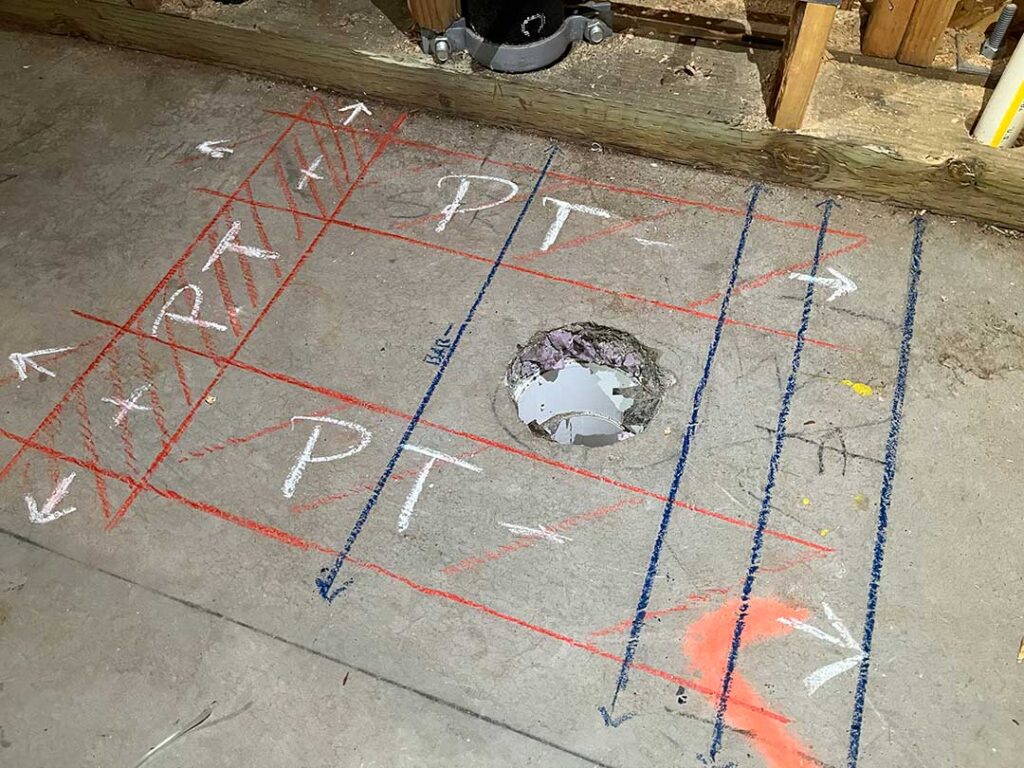Discover RainierGPR Service Areas for Trusted Concrete Scanning Solutions
Enhancing Job Preparation and Execution With Advanced Concrete Scanning Techniques
In the world of project planning and precision, implementation and foresight are essential aspects that can make the distinction between success and troubles. Advanced concrete scanning methods have actually arised as an innovative tool established to elevate the standards of project administration within the building sector.
Advantages of Advanced Concrete Scanning Methods

Improved Precision in Task Analyses
Enhancing task analyses via innovative concrete scanning strategies dramatically boosts the accuracy and integrity of building and construction analyses. By using sophisticated scanning modern technologies such as ground-penetrating radar (GPR) and 3D imaging, project teams can currently get detailed understandings into the problem of concrete structures, recognizing potential defects or weaknesses that may not be noticeable to the nude eye. This improved level of accuracy in task evaluations makes it possible for construction specialists to make even more educated decisions pertaining to fixing and upkeep approaches, bring about enhanced general project end results.
In addition, the raised precision in job assessments achieved via sophisticated concrete scanning methods helps in reducing the danger of unexpected concerns throughout the building and construction phase. By proactively finding concealed abnormalities within concrete structures, such as rebar deterioration or spaces, project groups can deal with these issues early, preventing pricey delays and rework later on in the project lifecycle. Inevitably, the improved precision in project analyses helped with by innovative concrete scanning methods adds to higher effectiveness, cost-effectiveness, and quality in building and construction tasks.
Very Early Identification of Architectural Challenges
Very early detection of structural obstacles plays a crucial function in making certain the integrity and safety and security of concrete structures throughout the building procedure. Identifying prospective concerns at a beginning enables timely intervention, avoiding pricey rework, schedule hold-ups, and safety and security dangers. Advanced concrete scanning techniques, such as ground-penetrating radar (GPR) and 3D imaging, allow task groups to reveal hidden problems, spaces, support design disparities, and various other anomalies that could compromise the structure's security.
By executing these methods throughout the preparation and implementation stages, construction professionals can proactively resolve structural challenges before they intensify into major issues. As an example, detecting insufficient concrete cover over support bars beforehand can protect against deterioration and architectural weakening over time - RainierGPR Service Areas. Additionally, recognizing variants in concrete thickness or density can assist enhance material usage and make sure consistent stamina residential Recommended Reading or commercial properties across the structure

Eventually, early identification of architectural obstacles via sophisticated concrete scanning not only enhances the total top quality and resilience of the construction yet additionally adds to a safer built setting for users and passengers.
Boosted Precaution in Building
The execution of robust security protocols is essential in the building industry to mitigate threats and secure the wellness of stakeholders and employees. Building and construction websites are inherently unsafe atmospheres, with prospective risks varying from falls and equipment breakdowns to structural failings. To enhance precaution, building and construction firms are progressively taking on technical developments such as wearable tools that keep track of workers' crucial signs and spot potential wellness issues in real-time. Moreover, using drones for site security enables normal safety and security examinations without putting workers in injury's means. Security training programs have actually also progressed to consist of virtual truth simulations that give hands-on experience in handling emergency scenarios. In addition, the assimilation of expert system in safety management systems enables positive identification of possible threats, permitting for prompt treatments. By focusing on security via the consolidation of innovative technologies and thorough training programs, building tasks can significantly reduce crashes and create a safe and secure working setting for all included - RainierGPR Service Areas.
Streamlining Task Monitoring Processes
To maximize operational effectiveness and guarantee job success in the construction industry, a concentrate on improving project management processes is vital. By executing reliable job administration processes, building and construction tasks can lessen delays, reduce prices, and boost total performance. One essential element of enhancing job monitoring is making use of innovative technologies such as Structure Info Modeling (BIM) software, which allows real-time collaboration, clash detection, and precise project organizing. In addition, the adoption of cloud-based project administration systems permits smooth interaction among group members, instant access to task data, and the capacity to track progress in real-time.

Final Thought
Finally, the usage of advanced concrete scanning methods offers numerous benefits for project planning and execution. These techniques offer better precision in task analyses, very early identification of structural obstacles, enhanced precaution in construction, and streamlined job management processes. Integrating these methods into job process can eventually cause more successful and efficient results in building and construction projects.
Eventually, the improved accuracy in project evaluations helped with by advanced concrete scanning methods contributes to better effectiveness, cost-effectiveness, and top quality in construction projects. RainierGPR Service Areas.
To enhance operational performance and guarantee project success in the building industry, an emphasis on simplifying job administration processes is important. By applying effective task management processes, construction jobs can reduce hold-ups, decrease expenses, and improve overall performance. By enhancing job monitoring processes via modern technology integration, clear interaction, and data-driven techniques, construction projects can attain better efficiency, cost-effectiveness, and effective end results.
These strategies supply improved accuracy in task evaluations, early identification of architectural obstacles, enhanced security actions in construction, and structured project monitoring procedures.